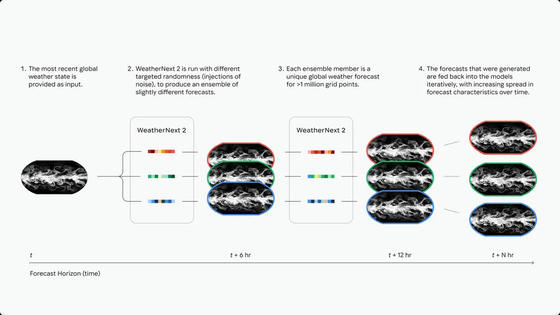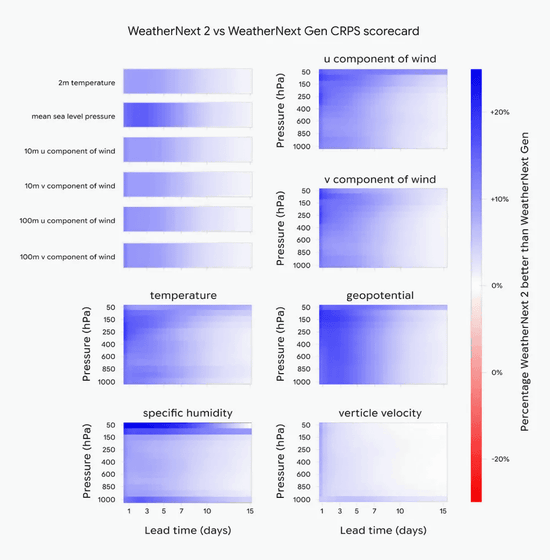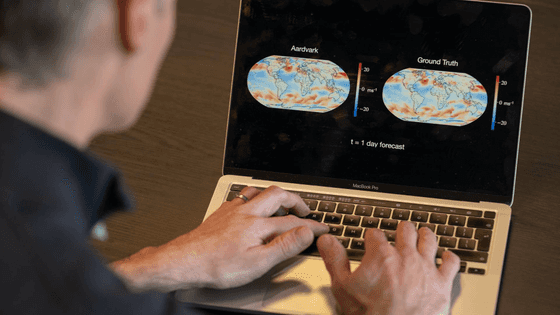Google announces WeatherNext 2, the most advanced and efficient AI model capable of high-resolution hourly forecasts

On November 17, 2025 local time, Google announced
WeatherNext 2: Google DeepMind's most advanced forecasting model
https://blog.google/technology/google-deepmind/weathernext-2/
WeatherNext 2: Our most advanced weather forecasting model - YouTube
Google updates its weather forecasts with a new AI model | The Verge
https://www.theverge.com/news/822489/weather-forecast-ai-model-google-weathernext
Weather forecasting requires predicting all possibilities, including worst-case scenarios, which Google points out are the most important for planning. WeatherNext 2 can predict hundreds of weather events from a single starting point. Each prediction takes less than a minute on a single TPU, compared to the hours it would take on a supercomputer using physics-based models.
WeatherNext 2 offers exceptional performance, delivering hourly, high-resolution forecasts and outperforming the previous state-of-the-art model, WeatherNext, in 99.9% of variables (temperature, wind, humidity, etc.) and forecast periods (0-15 days), resulting in more useful and accurate forecasts.
The performance improvements in WeatherNext 2 are achieved by employing a new AI modeling technique called Functional Generative Networks (FGNs), which inject noise directly into the model architecture to ensure the forecasts it generates remain physically realistic and interconnected.
The process for generating weather forecasts using WeatherNext 2 is as follows:
1: Enter the latest weather data
2: Adding noise to generate slightly different weather forecasts
3. Over 1 million weather forecasts completed
4: The generated weather forecast can be input into WeatherNext 2 again to forecast future weather.

This makes it particularly useful for forecasting what meteorologists call 'marginal' or 'joint' weather conditions. 'Marginal' weather conditions are weather conditions that are independent of each other, such as the exact temperature at a particular location or the wind speed at a particular altitude.
What's novel about WeatherNext 2 is that while the model is trained solely on marginal factors, it can effectively predict large-scale, complex, and interconnected weather that depends on how the individual factors are combined (jointly). Joint forecasting allows for accurate prediction of a variety of information, such as 'weather forecasts for areas affected by high temperatures' or 'the expected power generation of an entire wind farm.'
The graph below shows the Continuous Ranking Probability Score (CRPS) comparing the performance of WeatherNext 2 and WeatherNext. WeatherNext 2 outperforms WeatherNext by around 20% in each category.

WeatherNext 2 forecast data is available on Earth Engine and BigQuery , and an early access program has also been launched on the Vertex AI Platform for custom model inference.
WeatherNext 2 also powers weather forecasting in Google Search, Gemini, Pixel Weather, and Google Maps Platform's Weather AP I, and will be rolling out to weather information in Google Maps in the coming weeks.
Related Posts:







